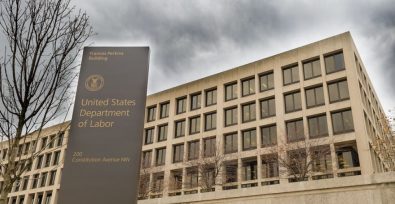A new report entitled “In Broad Daylight: Uyghur Forced Labor and Global Solar Supply Chains” was published last week confirming years of speculation about the solar panel industry’s dirty underbelly.
Co-authored by Laura Murphy, professor of human rights and contemporary slavery at the Helena Kennedy Centre for International Justice at Sheffield Hallam University, and Nyrola Elimä, a supply chain analyst who spent 19 years in the Uyghur Region, the report covers an exhaustive list of investigative evidence and research. The result?
Solar panel companies in Xinjiang create “green energy by consuming cheap, carbon-emitting coal,” the report states. They also “sacrifice human labour conditions in the bargain,” it adds.
According to the report, the Uyghur Region alone produces almost half of the world’s solar-grade polysilicon, which is a key component of solar panels.
Furthermore, the Uyghur forced labor system is prominent in the supply chains of major solar panel subsidiary companies, participating in the country-wide forced labor transfer programs.
One example given was the company Xinjiang Hoshine Silicon Industry.
According to CNN,
Hoshine is the world’s largest producer of metallurgical-grade silicon, a component created from mined and crushed quartz which is then sold to leading polysilicon makers.
The Chinese government places “surplus” rural workers at Hoshine’s factories, the report states. It cites a Chinese state media article from 2017 in which a local government agency said its surplus labor training program could provide 5,000 workers for the company.
Hoshine’s factory is located in the Shanshan Stone Industrial Park, an industrial center located near the city of Turpan in Xinjiang. Hoshine’s factory is in the northern section of the Industrial Park, according to the report, and several miles away, the southern section the park also holds two facilities that have been identified as detention centers for the “re-education” of Uyghur people by the Australian Strategic Policy Institute (ASPI), which has researched alleged abuses against minorities in Xinjiang.
As the world moves towards green energy to fight climate change, world leaders must consider the source of their ‘clean’ energy supplies. President Biden wants every state in the U.S. to use electricity only generated by clean energy by 2035.
Europe has similar aspirations to meet carbon emissions targets. Such goals require an influx of solar energy equipment. However, sourcing outside of China, while not impossible, is difficult and certainly more expensive.
American solar energy trade group, Solar Energy Industries Association (SEIA), which consists of over 1,000 companies, is urging the solar industry writ large to ensure their supply chains are free of forced labor.
Professor Murphy agrees, telling CNN, “So long as the Chinese government is running internment camps and forced labor programs in Xinjiang, no company should have a factory or a subsidiary there. Period.”
There are so many industries implicated in the Uyghur forced labor system that it would be impossible to ensure that all brands we enjoy in the rest of the world are made free from modern slavery.
The solution, therefore, is for the Chinese state to put an end to this oppressive system. Freedom United has gathered over 75,000 signatures calling on the Chinese government to end forced labor in the Uyghur Region.
Join them and add your name today.





Freedom United is interested in hearing from our community and welcomes relevant, informed comments, advice, and insights that advance the conversation around our campaigns and advocacy. We value inclusivity and respect within our community. To be approved, your comments should be civil.
A despicable way to isolate, oppress, and taint advancing countries.